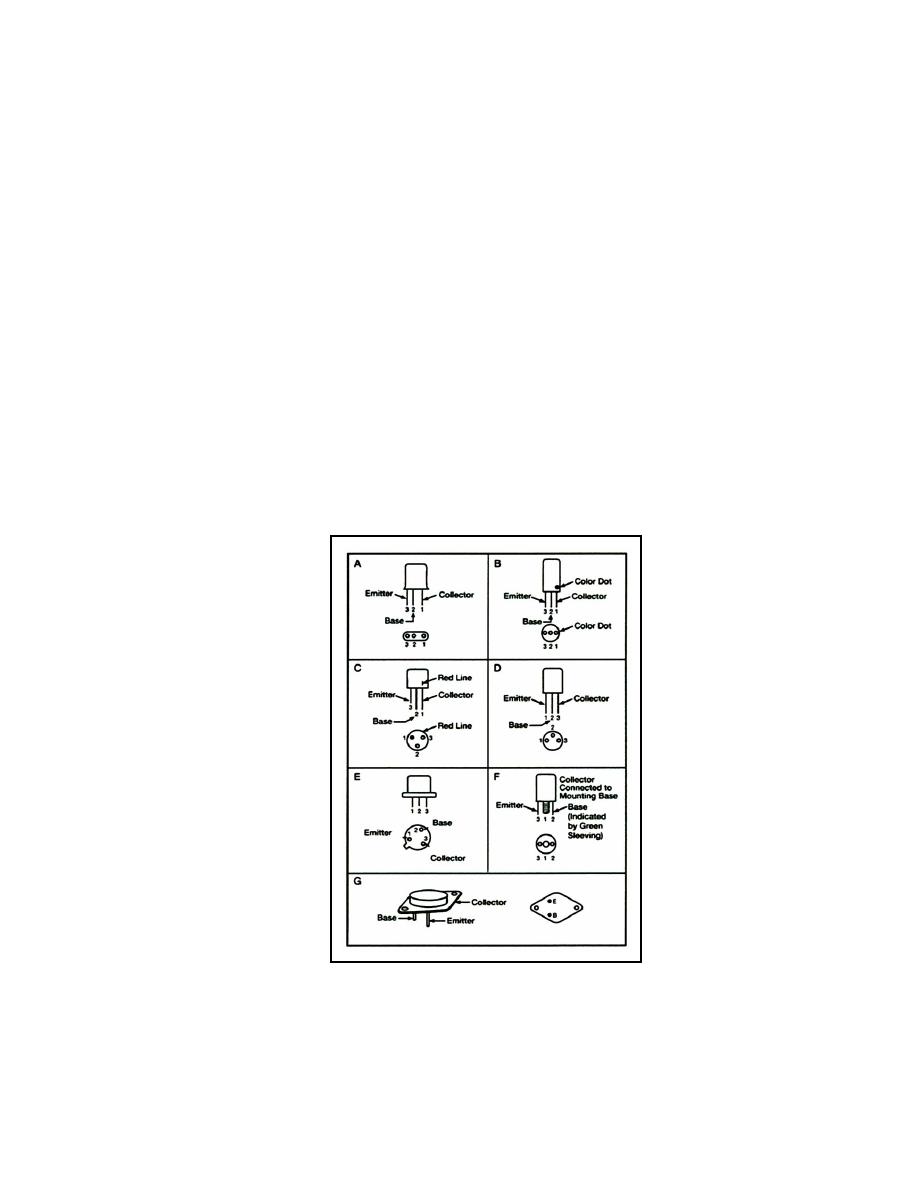
___________________________________________________________________________ Transistors
which, consult the equipment manual or a transistor manual that shows the specifications
for the transistor being used.
2-98. There are, however, some typical lead identification schemes that will be very
helpful in transistor troubleshooting. Figure 2-20 shows these schemes. In the case of the
oval shaped transistors shown in view (A), the collector lead is identified by a wide space
between it and the base lead. The lead farthest from the collector, in line, is the emitter
lead. When the leads are evenly spaced and in line, as shown in view (B), a colored dot,
usually red, indicates the collector. If the transistor is round, as in view (C), a red line
indicates the collector, and the emitter lead is the shortest lead. In view (D) the leads are in
a triangular arrangement that is offset from the center of the transistor. The lead opposite
the blank quadrant in this scheme is the base lead. When viewed from the bottom, the
collector is the first lead clockwise from the base. The leads in view (E) are arranged in the
same manner as those in view (D) except that a tap is used to identify the leads. When
viewed from the bottom in a clockwise direction, the first lead following the tab is the
emitter, followed by the base and collector.
2-99. In a conventional power transistor as shown in Figure 2-20, views (F) and (G), the
collector lead is usually connected to the mounting base. For further identification, the base
lead in view (F) is covered with green sleeving. You can identify the leads in view (G) by
viewing the transistor from the bottom in a clockwise direction (with mounting holes
occupying 3 o'clock and 9 o'clock positions). The emitter lead will be either at the
5 o'clock or 11 o'clock position. The other lead is the base lead.
Figure 2-20. Transistor Lead Identification
TRANSISTOR TESTING
2-100. There are several different ways of testing transistors. They can be tested while in
the circuit, by the substitution method mentioned, or with a transistor tester or ohmmeter.
23 June 2005
TC 9-62
2-29



 Previous Page
Previous Page
